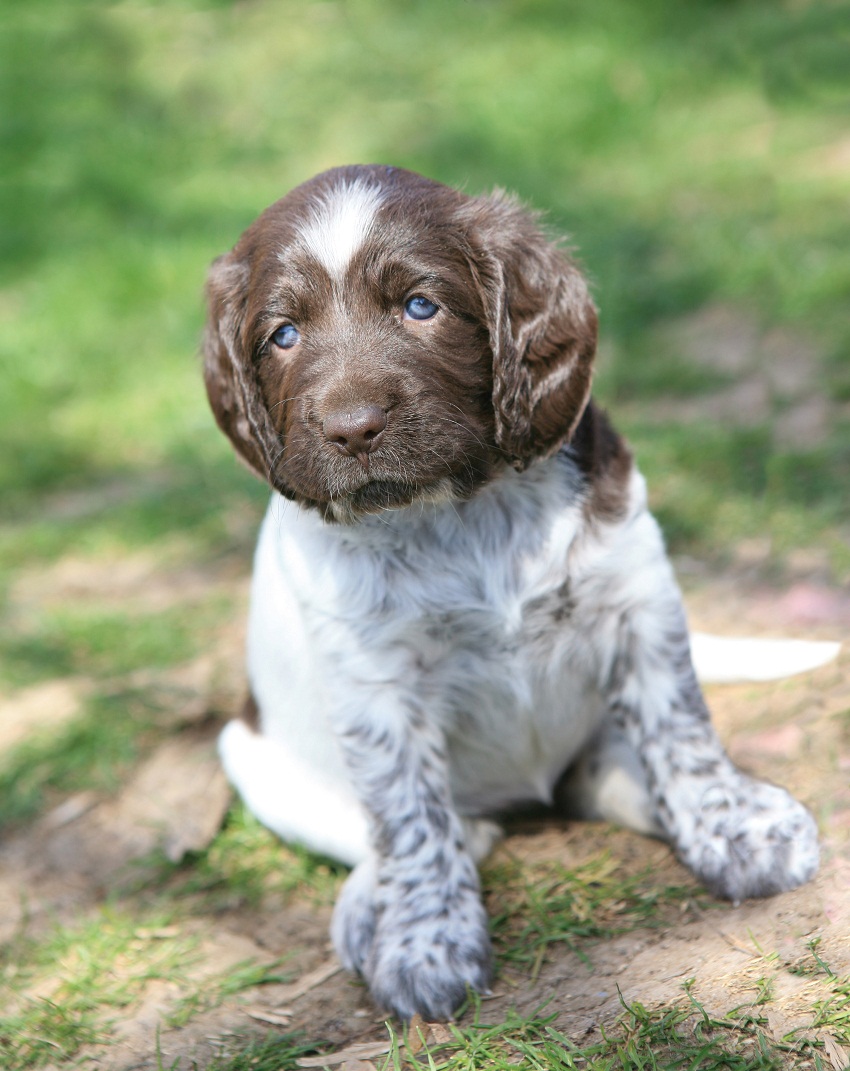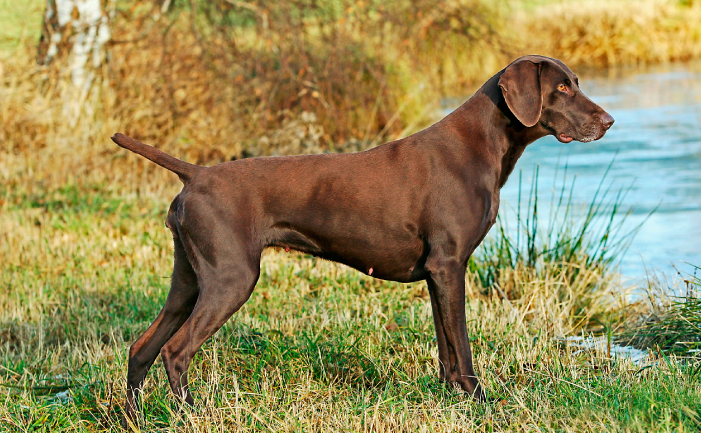German Longhaired Pointer Dog Breed Health, Temperament & Puppies
Table Of Content

The following is a blog post about the science, history, and delicacy of why do dog eats poop. Currently no points of concern specific to this breed have been identified for special attention by judges, other than those covered routinely by The Kennel Club's breed standard. You can also view the inbreeding coefficient calculation for a puppy's parents, or for a dog you're thinking of breeding from. Colour is only one consideration when picking a breed or individual dog, health and temperament should always be a priority over colour. Breed standard colour means that the colour is accepted within the breed standard and is a traditional and well-known colour in this breed. Here’s all information you need to know about the dog breed German Longhaired Pointer.
35 Large Dog Breeds That Make The Best Pets - Southern Living
35 Large Dog Breeds That Make The Best Pets.
Posted: Wed, 20 Mar 2024 07:00:00 GMT [source]
Temperament & Intelligence of the German Longhaired Pointer 🧠
When it comes to the connection between a dog’s age and their peeing habits, the younger the pooch, the more they need to go out. Puppies have smaller bladders and higher metabolisms, so they typically need to go out more frequently. A general rule of thumb is to take a puppy out every 1 to 2 hours, especially after eating, drinking, playing, or waking up from a nap. Make sure to let them know why you are going out so they’ll gradually relate walkies with peeing time.Adult dogs, on the other hand, can usually hold their bladders for longer periods.
Find out about a particular dog's results
Keep your GLP in a well-secured area, and approach all off-leash activity with caution and adequate awareness of your surroundings. Be careful with kennels that claim to breed a large variety of breeds or if they refuse to allow you to see the parents, which are signs of puppy mills and backyard breeders. GERMAN LONG HAIRED POINTERs only require an average amount of grooming, and this should be done with a brush at least once a week. The hair can occasionally grow course, and can pick up leaves, thorns and the like while they are out on walks, and chasing animals into bushes; so care must be taken to remove them. GERMAN LONG HAIRED POINTERs are only brown all over or brown with white markings.
Some breeds have unique grooming needs
He is considered to be one of the oldest longhaired pointers that is also a versatile breed and is also one of only a few that does not allow the dog to be solid black or black and white. The Large Munsterlander came from the German Longhaired Pointers that were black or black and white. Eventually, the Large Munsterlander evolved into a distinctly looking breed from the German Longhaired Pointer.
Be sure the breeder you choose stands behind the health of their dogs. The German Longhaired Pointer’s medium coat needs attention a few times per week or more if he spends much time outdoors. You’ll need to brush him almost daily to remove any dirt and debris he picks up outside. A slicker brush will help you remove dirt and mats from their coat, and you can follow up with a bristle brush to make their coat shine. He has short hair between the pads of his paws, so check between his toes and behind his ears daily for mats or burrs he may have picked up outdoors. As the breed’s name suggests, great importance is attached to having the correct coat.
Exercise needs
Feeding the best quality nutrition that you can afford may be more cost-effective in the long run than skimping with a bargain brand kibble. GLPs are quick studies but respond better to loving praise than to strict repetition and, like a teenager, may rebel if pushed too forcefully. They do not tolerate harsh reprimands or negative-reinforcement training. If you want your GLP to be able to handle time away from you during the day, you must spend quality time with him as a house dog, not just a field dog. While some breeds are commonly found in shelters and rescues, German longhaired pointers are not a common breed.
I’m hoping the children will come too, I love playing with the children. Tomorrow we are going to the agility day, and I will be jumping over lots of hurdles and through hoops; it’s no big deal for me though – I’m really smart and I can quickly learn everything I supposed to do. I don’t see many of my own breed over there, I think we’re quite rare and unique . German Longhaired Pointers get along great with other dogs and pets, provided they are trained well and socialized early. Due to their history as hunting companions, they have a strong prey drive and see smaller pets as targets!

Conduct thorough research to ensure that the breeder follows ethical practices and prioritizes the well-being of their dogs. Reputable German Longhaired Pointer breeders prioritize the health and temperament of their dogs, conduct necessary health screenings, and provide a nurturing environment for the puppies. This active approach ensures that you bring home a healthy and happy pup while discouraging unethical breeding practices. The German Longhaired Pointer is a multipurpose hunting dog breed that Germans started selectively breeding for their versatility and athleticism. Today, the German Longhaired Pointer, or GLP for short, is a gentle, loyal breed. In their native country, they’re called Deutsch-Langhaar, or the German Longhair.
They are an excellent, well-proven hunting companion because they have been bred for hunting for more than a century. German Pointer Long Hair are active dogs, which need a lot of exercise. They are particularly well suited for people who have an active lifestyle and enjoy spending time outdoors. They are not well suited for urban lifestyle, and if you live in an apartment or townhouse, then this breed is not for you.
The German Longhaired Pointer, often referred to as the GLP, is a distinguished and versatile hunting dog breed that hails from Germany. Renowned for its elegant and athletic appearance, this breed combines beauty with exceptional hunting skills. Its striking coat is dense and wavy, typically liver or liver and white, with feathering on the legs and ears.
A reputable breeder is your best chance if you're looking to acquire this type of dog. Dog shows and the German Longhaired Pointer Club of North America may provide you with some options, but expect to pay between $1,000 and $2,000 for a healthy puppy (and be prepared to get on a waitlist). German Longhaired Pointers require regular exercise to stay happy and healthy, and they’ll need daily training. This makes them a big responsibility and time investment, and you should consider this carefully before bringing one home.
Feed him 2-3 cups of quality kibble, and supplement that with tinned food and quality lean meats for the best results. At the end of the day, how a German Longhaired Pointer does with kids and other pets comes down to training, socialization, and luck of the draw. The GLP may develop destructive habits and separation anxiety if left alone for extended periods.
California tenants with pets rejoice - a new bill that stops landlords from denying housing to pet owners is in the works! The chair of the California Legislative Renters Caucus, Matt Haney, has introduced legislation that would compel landlords to accept tenants with pets. The bill, AB 2216, will insist that landlords have reasonable reason(s) for not allowing a pet in the rental unit. Alas, under current law, only around 30% of all rentals are pet-friendly.
A large, securely fenced yard is a must for this energetic pup but may not be enough to fulfill his physical and mental engagement needs. If you need a trusty companion who switches seamlessly from field to couch, consider the loyal German Longhaired Pointer. Let's explore the history and characteristics of this fascinating and rare breed. If the German Longhaired Pointer sounds like the right dog for you, the last decision to make is whether to get a male or female.
Whether you’re exploring mountains, rivers, lakes, or forests, you can be sure your Pointer will love to be by your side. The German Longhaired Pointer originated in Germany and was initially a slow, stubborn, and temperamental breed. During the 19th century, they were crossed with Setters and English Pointers to improve their speed, and through breeding, they have since become friendly, gentle, and even-tempered animals. They depend on us for, at minimum, food and shelter, and deserve much more.
The GLP was bred to work in the field, and even if he’s not hunting for you, he requires ample exercise and space to run. As with many active breeds of similar size, he can be a handful as a younger dog and needs a securely fenced yard to run off some energy. His athleticism can power unexpected escapes, and he can jump a six-foot fence. Because the GLP gets along well with other dogs, a trip to the dog park can provide him a chance to burn off some energy. His background as a jack of all trades makes him versatile and biddable. Eager to please his family, the GLP is obedient and not only good with children but with other dogs as well.

Comments
Post a Comment